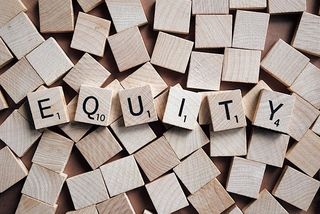HELOC vs Home Equity Loan: Unlocking your home's hidden value
If you’re considering tapping into your home’s equity, you might be wondering whether a HELOC vs. home equity loan is the better choice to borrow money. As property owners seek financial flexibility, these two options stand out—but which path is right for you? Let's dive into the key differences, pros, and cons of each to guide your decision-making process.
Key Takeaways
-
Home equity loans offer a single, large payout with steady interest rates and consistent monthly installments, making them well-suited for substantial, non-recurring costs.
-
Home equity lines of credit (HELOCs) offer a revolving line of credit with variable interest rates, allowing flexible access to funds but requiring careful financial management due to fluctuating payments.
-
The choice between a home equity loan and a HELOC depends on individual financial situations, intended use of funds, and preference for payment stability or flexibility.
-
Tax deductibility for both options is limited, and borrowers should consider alternatives like personal loans or cash-out refinances based on their very specific needs.
Understanding Home Equity Loans and HELOCs

Home equity, the difference between your home’s market value and the mortgage's remaining debt, is a powerful financial tool that homeowners can leverage. But exactly how much money can you borrow, and how do you tap into this wealth?
You can access funds through either a home equity loan or a home equity line of credit (HELOC), two distinct paths to leveraging your property's value. Both options use your home as collateral, but they operate in fundamentally different ways.
A home equity loan typically provides a lump sum of money with fixed monthly repayments, while a HELOC offers a revolving credit line that you can draw money from as needed. Understanding the specifics of each can help determine which might be the best fit for your financial needs.
What is a Home Equity Loan?
A home equity loan (sometimes abbreviated as HEL) allows you to borrow a specific amount of money all at once. This lump sum payment comes with a fixed interest rate, so your monthly home equity loan payments remain consistent throughout the life of the loan. With fixed interest rates typically ranging from 3.5% to 5.5%, these loans are relatively affordable compared to other types of credit.
The repayment period for home equity loans usually spans from five to fifteen years, with some extending up to 20 years. The fixed nature of these loans means you’ll have a clear picture of your repayment schedule from the beginning, so you'll know exactly what you owe each month for the next 5 to 20 years—a significant advantage for budgeting and long-term financial planning. This makes them ideal for large, one-time expenses such as home improvements, your next investment property down payment, or debt consolidation.
What is a HELOC?
A home equity line of credit (often abbreviated as HELOC and pronounced "hee-lock") works more like a credit card. Instead of receiving a lump sum, you get access to a credit line that you can draw from as needed, up to a certain limit. This can be particularly useful for ongoing expenses or projects with variable costs, like home renovations.
Think of a HELOC as your home's personal credit card. Need funds? Simply draw from your pre-approved limit. However, with great power comes great responsibility—HELOCs typically come with variable interest rates, which means your monthly payments can fluctuate over time.
The HELOC lifespan is split into two parts: the draw period, where you borrow and repay at will, followed by the repayment phase, where it's time to tackle the loan balance and principal.
-
Draw period: Usually between 5 and 10 years. Usually, you only need to pay interest as your monthly minimum payment during this time, though you can start paying off the principal at any point.
-
Repayment phase: After the 5–10-year draw period ends, you enter the repayment phase, where you must start paying back the principal along with the interest. During this period, your minimum monthly payment will be higher.
Both home equity lines of credit and home equity loans use your home as collateral, transforming bricks and mortar into liquid assets. The choice between them hinges on your financial needs, risk tolerance, and long-term goals. Are you ready to unlock your home's hidden potential?
Key Differences Between Home Equity Loans and HELOCs

Understanding the key differences between home equity loans and HELOCs is crucial for making an informed decision. Both options are powerful tools that allow you to leverage your home equity, but they cater to different financial needs and circumstances. A home equity loan is often better suited for funding a single, large project with a known cost, while a HELOC offers ongoing access to funds, making it ideal for projects with variable expenses.
The choice between a home equity loan and a HELOC depends on various factors, including your financial situation, the purpose of the loan, and your comfort with variable vs. fixed interest rates. Next, consider the specifics of other loans, interest rates, repayment structures, and access to funds to decide which option suits you best.
Here's a comparison at a glance:
| Home Equity Loan | HELOC | |
|---|---|---|
| Funding | Lump sum | As needed |
| Interest Rate | Fixed | Variable (typically) |
| Repayment | Fixed monthly payment | Interest-only payments possible during draw period |
| Best For | One-time, large expenses | Ongoing or unpredictable costs |
| Risk Level | Lower (predictable payments) | Higher (potential for payment increases) |
Fixed Interest Rate vs. Variable Interest Rate
One of the primary differences between home equity loans and HELOCs is how their rates are structured. Home equity loans typically offer a fixed rate, so there are predictable monthly payments.
In contrast, HELOCs usually have variable interest rates, which means your monthly payments can change over time. While this can sometimes lead to lower payments if rates drop, it can also result in higher payments if rates increase, adding a layer of uncertainty to your financial planning.
Some HELOCs do offer the option to convert to a fixed rate, providing a balance between flexibility and stability.
Repayment Structures
The repayment structures of home equity loans and HELOCs also differ significantly. With a home equity loan, you're on a set path—fixed monthly payments until the loan is paid in full. HELOCs offer a two-act play: the draw period (where you might only pay interest) followed by the repayment period. This two-phase approach can provide short-term cash flow relief but requires careful planning to manage the eventual increase in monthly payments. It's flexibility now, discipline later.
Access to Funds: Lump Sum vs. Credit Line
Access to funds is another critical difference between home equity loans and HELOCs. With a home equity loan, you receive a lump sum payment upfront, giving you immediate access to a significant amount of money.
In contrast, HELOCs are more like having a financial safety net, always there when you need it (up to your approved limit). This flexible access to funds can be advantageous for ongoing projects or expenses that may vary over time. However, it’s essential to manage this credit line carefully to avoid overborrowing and incurring high-interest payments.
Pros and Cons: Home Equity Loans vs. HELOCs

Choosing between a home equity loan and a Home Equity Line of Credit (HELOC) is a crucial financial decision. Both leverage your home's value, but they serve different needs and come with distinct advantages and challenges. Let's break down the pros and cons of each to help you make an informed choice.
Home Equity Loans: The Structured Solution
Pros:
-
Predictable payments: Fixed rates mean steady, foreseeable monthly costs.
-
Competitive rates: Using your home as collateral often results in lower rates than unsecured loans.
-
Lump sum disbursement: Ideal for large, one-time expenses or projects with known costs.
Cons:
-
Limited flexibility: Once you've borrowed, you can't access additional funds without a new loan.
-
Higher upfront costs: Closing costs and fees can be substantial.
-
Foreclosure risk: Defaulting on payments could result in losing your home.
HELOCs: The Flexible Financing Option
Pros:
-
On-demand access: Draw funds as needed, up to your approved limit.
-
Lower initial costs: Generally fewer upfront fees compared to home equity loans.
-
Interest-only payments: Potential for lower payments during the draw period, which can be helpful when factoring in debt-to-income (DTI) ratio for new investment properties.
Cons:
-
Variable interest rates: Monthly payments can fluctuate, making budgeting challenging.
-
Overspending risk: Easy access to funds may lead to accumulating more debt than intended.
-
Payment shock: Transitioning from draw period to repayment can significantly increase monthly obligations.
Choosing the Right Option for Your Needs

Selecting the right financing option depends on your individual financial situation and long-term goals. Both home equity loans and HELOCs have their advantages and disadvantages, and the best choice for you will depend on your specific needs and circumstances. Let's dive into how to make the right choice for your financial future.
Assessing Your Financial Landscape
First, you'll need to understand your home’s equity, which is the market value of your home minus any outstanding debt. Lenders typically allow you to borrow up to 85% of your home’s equity.
**Market value of home – Outstanding mortgage debt = Home equity**
**Home equity × 85% = Borrowing potential**
Additionally, consider your debt-to-income ratio, which should ideally be below 43% to qualify for a loan:
**Monthly expenses ÷** **Monthly pre-tax income = DTI ratio**
Remember that your credit score and financial history will also influence your eligibility and the interest rates you receive.
Tax Implications
When considering a home equity loan or HELOC, it’s essential to understand the potential tax implications. Interest paid on these loans may be tax-deductible if the funds are used for significant renovations. However, to benefit from these deductions, homeowners must itemize their deductions on their tax returns.
Under the Tax Cuts and Jobs Act, the rules for deducting interest on home equity loans and HELOCs have changed. From 2018 to 2025, interest can only be deducted if the funds are used for buying, building, or substantially improving the home that secures the loan.
Additionally, married couples can only deduct interest on mortgage debt up to $750,000, which includes both primary and secondary mortgages. Make sure to stay informed about these tax regulations and consult with an investor-friendly tax professional to maximize your deductions.
Considering Long-Term Goals
When deciding between a home equity loan and a HELOC, consider your long-term financial objectives. For instance, if you plan to sell your home in the near future, a home equity loan with fixed payments might offer more predictability.
On the other hand, if you anticipate needing flexible access to funds over time, a HELOC may be more suitable. Evaluate how the loan fits into your broader financial picture, including potential future needs such as emergency funds, retirement savings, and new investment property opportunities.
Consider the potential for property appreciation and how leveraging your home’s equity now might impact your long-term wealth, especially if you are considering an investment property. By carefully considering these factors, you can choose a financing option that supports your overall financial well-being.
Application Process for Home Equity Loans and HELOCs

Applying for a home equity loan or HELOC involves several steps, and the process typically begins with assessing your home’s value through an appraisal. Being well-prepared and informed will help you navigate the process smoothly and secure the financing that best meets your needs.
High-risk borrowers may face higher interest rates, so demonstrating a strong financial history and the ability to repay the loan is crucial. Streamline your application process with the following steps:
-
Gather financial documents: Proof of income (such as bank statements or paystubs) and mortgage details (such as tax records and proof of insurance)
-
Understand lender criteria: Credit score, debt-to-income ratio, and appraised value of your home.
-
Compare offers: Shop around for the best interest rates and terms
Alternatives to Home Equity Loans and HELOCs

While home equity loans and HELOCs are both popular choices that many lenders offer for leveraging home equity, other financing options may better suit your needs:
-
A personal loan (aka an unsecured loan) offers flexibility without requiring collateral, though personal loans often come with higher interest rates.
-
Cash-out refinances allow you to replace your existing mortgage with a higher principal balance, providing immediate access to funds—but you're subject to a change in your original interest rate.
-
401(k) loans enable you to borrow against your retirement savings without a credit check, though this can impact your future retirement funds.
-
Credit cards can provide quick access to funds for short-term needs but typically have extremely high interest rates. If you know anything about personal finance, you know to be careful with this option!
Summary

Property owners looking to leverage their equity have two primary options: home equity loans and HELOCs. While both use the home as collateral, they differ significantly in structure and application. Home equity loans offer stability with fixed rates and payments, suited for known expenses, while HELOCs provide flexibility with variable rates and revolving credit, ideal for ongoing projects. The decision between these options hinges on personal financial goals, risk tolerance, and specific funding needs. Potential borrowers should carefully assess their financial landscape, consider long-term objectives, and understand the application process and alternatives before choosing the most suitable option for unlocking their home's hidden value.
HELOCs for Rental Property Are BACK (Use Your Equity!)
Don’t think you have enough equity for a HELOC? If you bought your home anytime before 2020, there’s a good chance you could be sitting on hundreds of thousands in unused equity that could be funding your next real estate deal. But, before you call your local lender and ask for a six-figure payout, you MUST know the drawbacks.
